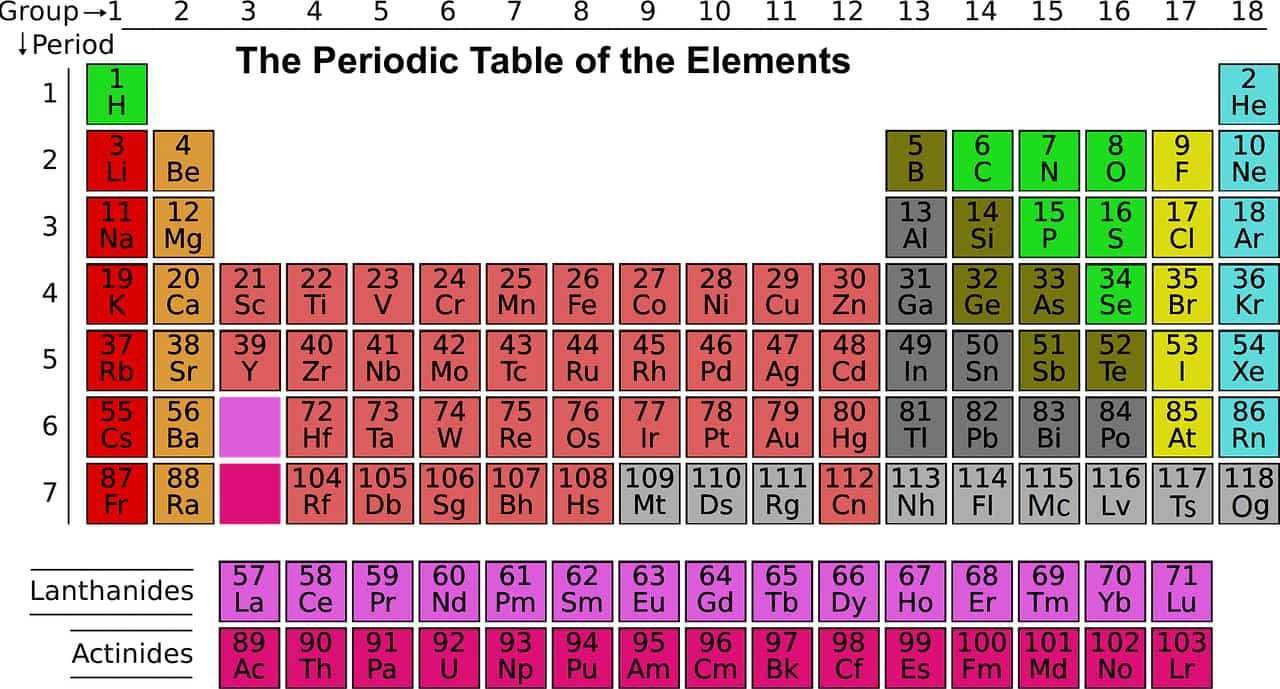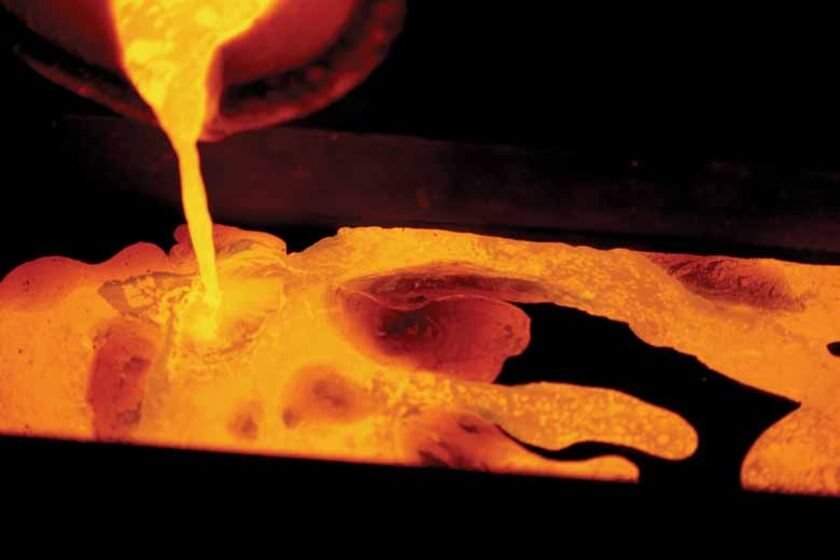Hydrogen is the chemical element with atomic number 1, symbol H
At standard temperature and pressure, hydrogen is colorless, odorless, non-metallic, single-valent, and is a highly flammable diatomic gas. With an atomic mass of 1.00794 amu, hydrogen is the lightest element in the world.
Hydrogen is also the most abundant element, accounting for about 75% of the total mass of the elements in the universe. Most stars are formed by hydrogen in the plasma state. Hydrogen compounds are relatively rare and rarely found naturally on Earth, and are usually produced industrially from various hydrocarbons such as methane. It can also be produced from water through electrolysis, but this process is more expensive commercially than producing hydrogen from natural gas.
| Atomic Number: | 1 | Atomic Radius: | 120 pm (Van der Waals) |
| Atomic Symbol: | H | Melting Point: | -259.16 °C |
| Atomic Weight: | 1.008 | Boiling Point: | -252.879 °C |
| Electron Configuration: | 1s1 | Oxidation States: | −1, +1 (an amphoteric oxide) |
What is the role of hydrogen?
Today, hydrogen is almost exclusively used for industrial uses in chemicals and refining. Tomorrow, its capacities as an energy vector could play a major role in the field of transport, in the gas sectors, in the production of electricity and heat. Hydrogen produced with renewable energies is completely free of carbon. When turned into electricity, it only emits water. It is also easy to store and transport, which allows us to use this renewable energy to its full potential.
Great quantities of hydrogen are required commercially for nitrogen fixation using the Haber ammonia process, and for the hydrogenation of fats and oils. It is also used in large quantities in methanol production, in hydrodealkylation, hydrocracking, and hydrodesulfurization. Other uses include rocket fuel, welding, producing hydrochloric acid, reducing metallic ores, and filling balloons.
The lifting power of 1 cubic foot of hydrogen gas is about 0.07 lb at °C, 760 mm pressure.
The hydrogen fuel cell is a developing technology that will allow great amounts of electrical power to be obtained using a source of hydrogen gas.
Consideration is being given to an entire economy based on solar- and nuclear-generated hydrogen. Public acceptance, high capital investment, and the high cost of hydrogen with respect to today’s fuels are but a few of the problems facing such an economy. Located in remote regions, power plants would electrolyze seawater; the hydrogen produced would travel to distant cities by pipelines. Pollution-free hydrogen could replace natural gas, gasoline, etc., and could serve as a reducing agent in metallurgy, chemical processing, refining, etc. It could also be used to convert trash into methane and ethylene.
Toxicity, ecotoxicity
Very few studies appear to have been conducted on these subjects, possibly because living organisms are not believed to be exposed to hydrogen gas in nature. Indeed, this gas being very light, it disperses quickly towards the very high layers of the atmosphere.
In terms of toxicity to humans, it can be absorbed into the body by inhalation. In an industrial environment or in the presence of a large leak, a harmful concentration of this gas (odorless) in the air can be quickly reached (and also form an explosive mixture with air, oxygen, halogens and all powerful oxidizer, especially in the presence of a metallic catalyst such as nickel or platinum). At high concentrations, hydrogen leads to a worsening of pre-existing lung problems and anoxia, with symptoms such as headache, ringing in the ears, dizziness, drowsiness, loss of consciousness, nausea, vomiting and depression. all the senses ”and skin that can take on a bluish tint, before suffocation if exposure is prolonged.
Hydrogen is not yet (2019) known to be a source of mutagenicity, embryotoxicity, teratogenicity or toxicity for reproduction.
The hydrogen atom
It is the simplest chemical element; its most common isotope consists of only one proton and one electron. Hydrogen is the lightest atom. As it has only one electron, it can only form a covalent bond: it is a univalent atom.
However, solid hydrogen can be metallic when under very high pressure. It then crystallizes with a metallic bond (see metallic hydrogen). In the periodic table of the elements, it is found in the column of alkali metals. However, not being present in this state on Earth, it is not considered a metal in chemistry.
The hydrogen capture cross section (200 mb with thermal neutrons and 0.04 mb with fast neutrons) is low enough to allow the use of water as a moderator and coolant in nuclear reactors.
Isotopes
| Main isotopes of hydrogen | |||||||||||||||||||||
|---|---|---|---|---|---|---|---|---|---|---|---|---|---|---|---|---|---|---|---|---|---|
| |||||||||||||||||||||
The isotope of hydrogen that is most commonly found in nature is protium, whose atomic nucleus has only a single proton and no neutrons. Hydrogen ionic compounds can have a positive (cation) or negative (anion) charge. It can form compounds with most elements and can be found in water and organic compounds. It is very important in acid-base reactions where many of these reactions involve the exchange of protons between dissolved molecules. Since it is the only neutral atom for which the Schrödinger equation can be solved analytically, the study of the energetics and bonding of the hydrogen atom played a very important role in the development of quantum mechanics.
Physical properties
| Physical properties | |||||||||||||||
|---|---|---|---|---|---|---|---|---|---|---|---|---|---|---|---|
| Phase at STP | gas | ||||||||||||||
| Melting point | (H2) 13.99 K (−259.16 °C, −434.49 °F) | ||||||||||||||
| Boiling point | (H2) 20.271 K (−252.879 °C, −423.182 °F) | ||||||||||||||
| Density (at STP) | 0.08988 g/L | ||||||||||||||
| when liquid (at m.p.) | 0.07 g/cm3 (solid: 0.0763 g/cm3) | ||||||||||||||
| when liquid (at b.p.) | 0.07099 g/cm3 | ||||||||||||||
| Triple point | 13.8033 K, 7.041 kPa | ||||||||||||||
| Critical point | 32.938 K, 1.2858 MPa | ||||||||||||||
| Heat of fusion | (H2) 0.117 kJ/mol | ||||||||||||||
| Heat of vaporization | (H2) 0.904 kJ/mol | ||||||||||||||
| Molar heat capacity | (H2) 28.836 J/(mol·K) | ||||||||||||||
Vapor pressure
| |||||||||||||||
Atomic properties
| Atomic properties | |
|---|---|
| Oxidation states | −1, +1 (an amphoteric oxide) |
| Electronegativity | Pauling scale: 2.20 |
| Ionization energies | 1st: 1312.0 kJ/mol |
| Covalent radius | 31±5 pm |
| Van der Waals radius | 120 pm |
Chemical properties
The solubility and characteristics of hydrogen with various metals is a very important subject in the field of metallurgy (because its embalming can occur in most metals) and in the research and development of safe ways to store hydrogen as fuel.
Other properties
| Other properties | |
|---|---|
| Natural occurrence | primordial |
| Crystal structure | hexagonal |
| Speed of sound | 1310 m/s (gas, 27 °C) |
| Thermal conductivity | 0.1805 W/(m·K) |
| Magnetic ordering | diamagnetic |
| Magnetic susceptibility | −3.98·10−6 cm3/mol (298 K) |
| CAS Number | 12385-13-6 1333-74-0 (H2) |
How do we make hydrogen and why do we do it?
For a long time, this was only possible by means of reforming or gasification. Unfortunately, this process involves the use of fossil fuels (oil, gas) or wood. Even today, 95% of hydrogen is produced this way. Fortunately, with electrolysis, the contours of a future where green hydrogen production will become the norm are gradually taking shape…
1. Reformation: converting methane to hydrogen
This is a process that is currently favored by major manufacturers. Cheap, but the ecological impact is quite large.
Once the natural gas pockets are identified, the first step is to carry out hydrodesulfurization. In fact, in nature, in addition to methane (CH4), the gas is full of sulfur, the presence of which can be dangerous for subsequent operations.
Purified, methane is placed in the presence of very hot water. Due to the presence of water atoms (H20) and high temperatures, the bonds holding carbon atoms together are broken. Floating freely in the atmosphere, they gradually rearrange to produce syngas made of carbon monoxide (CO) and dihydrogen (H2). And that’s just the beginning…
Furthermore, the water vapor still in the medium reacts with the gas to produce carbon dioxide (CO2) and dihydrogen. After a few minutes, all existing components have mutated. From now on, only a mixture of CO2 and H2 remains, which will be clarified to store only 99.99% H2.
2. Gasification: produce hydrogen from charcoal
Of all the methods used to produce hydrogen, this is the most polluting. Shown by environmentalists, is gradually tending to be replaced by more environmentally friendly approaches.
In a very high temperature reactor, the charcoal is set to burn. The goal is to break the bonds that hold the methane (CH4) atoms together in the compound. Thus, the carbon and H atoms can unite with the gases in the siphon.
From methane (CH4), we get dihydrogen (H2) and carbon monoxide (CO).
For the reaction to give the desired result, the heating temperature must oscillate between 1,200 and 1,500 °C. Besides charcoal, gasification can draw its power from biomass. Even using this energy source, the process is still not very ecological.
3. Electrolysis: convert water into hydrogen
Covering 70.1% of the earth’s surface, water is undoubtedly the most abundant molecule in the environment. It is no coincidence that Earth is nicknamed the “little blue planet”.
Molecularly, water is in the form of two hydrogen atoms (H) bonded to one oxygen atom (O). Therefore the formula is written H2O. Fortunately, the bonds between H and O atoms can be easily dissolved by electricity. When subjected to an electric current, water molecules lose their cohesion. H2O becomes hydroxide ion (OH)- and proton H+. Placed side by side, the protons react with each other and give dihydrogen (H2).
To use less energy, it is possible to replace liquid water with its gaseous equivalent. Requiring only 700 to 1,000 °C (1292 to 1832 °F) to destroy, water vapor is an attractive alternative for those looking to speed up the reaction rate.
One of the biggest advantages of this process is its incredible ease. Forget the Teflon reactor or the titanic installation. Electrolysis makes it possible to obtain pure hydrogen easily which is confusing. As long as you have two electrodes, it becomes possible to produce H2.
From an ecological point of view, this procedure is full of quality. Regardless of the process step, not a single harmful gas is emitted. This is why, until recently, this was the only way to produce green hydrogen.
If you want to stick with a zero-waste approach, use renewable energy sources to power your devices. Wind energy, biogas, diesel… you are spoiled for choice to limit greenhouse gas production. What are you waiting for to let yourself be seduced by green hydrogen?
4. Photosynthesis: produce hydrogen using microorganisms
Obviously, nature hasn’t finished surprising us… During a scientific expedition, researchers discovered a microorganism capable of producing H2 from light and water.
Upon analysis, it is a unicellular green algae or cyanobacteria. Small in size, this living thing is not within its capabilities. They only need water and light rays to naturally synthesize this gas which is very valuable to humans.
Currently, many research projects have set themselves the task of optimizing this reaction as much as possible. By tracing this model, it has been possible to construct a photoelectrochemical cell, which electrolyses water to H2 under the influence of sunlight.
5. Thermochemistry: breaks down water at very high temperatures
At very high temperatures, water naturally decomposes into H and O. However, much remains to be done before this phenomenon is fully under control.
Uses of hydrogen
Today, hydrogen has 2 main uses: on the one hand, it serves as a feedstock for the production of ammonia (fertilizer) and methanol; on the other hand, it is used as a reagent in the process of refining crude oil into petroleum products, fuels and biofuels. The uses that can be made from it remain numerous, and hydrogen holds promise for decarbonizing a number of sectors and supporting the energy transition.
Today, hydrogen is used almost exclusively for industrial purposes in chemicals and purification. Tomorrow, its capacity as an energy vector can play a major role in the transportation sector, in the gas sector, in the production of electricity and heat.
Transportation sector
In the decarbonization of the transportation sector, which is mostly fuel oil, hydrogen has become one of the vectors of competition to replace conventional heat engines.
Hydrogen car / Hydrogen engine
The physico-chemical characteristics of hydrogen make it a good candidate for use as a fuel in “petrol” type spark ignition engines. The main advantage lies in the balance of the environment: combined with oxygen, the combustion of hydrogen essentially produces water and heat and releases only nitrogen oxides (NOx). However, this solution requires special adaptation to obtain very high efficiency and very low NOx emission. In particular, it was necessary to exploit the different properties of hydrogen, such as its ability to burn rapidly in very lean mixtures.
Fuel cells in electric cars
In the long term, car manufacturers are also interested in fuel cells (or Fuel Cells), as power plants for electric vehicles. This is to complement the battery-powered electric vehicle solution, which is currently experiencing limited autonomy and battery recharging time. The hydrogen is then used to power the fuel cells – which generate electricity – to operate the electric motors that power the vehicles. Hydrogen is one of the best energy carriers for fuel cells today in terms of energy performance and emissions. Their efficiency is generally greater than 50% over a wide operating range, which is an attractive advantage over today’s gasoline engines.
Powered by a mixture of air and hydrogen, the battery converts the chemical energy of hydrogen into electrical energy following the reverse principle of electrolysis. By reacting hydrogen with oxygen from the air at the electrodes (a smooth membrane coated with a catalyst, platinum), fuel cells make it possible to generate electricity with no emissions other than water vapor. The principle has been around since 1839! It has long been used to generate electricity in rockets.
Hydrogen trains and planes
Plans in several countries supporting hydrogen are among the goals of commissioning the first hydrogen train.
Hydrogen planes or “clean planes”, if ambitious projects have emerged, still have to answer a number of questions in terms of technology, environment and safety.
For space
From the origins of the space industry, hydrogen soon played an important role as a rocket fuel. It is the fuel that concentrates the most energy: 1 kg of hydrogen contains 3 times more energy than 1 kg of gasoline. A very important criterion when we know that the space launcher should be as light as possible.
Today, the combination of liquid hydrogen and liquid oxygen is still used to launch the European Ariane 5 rocket. In the Ariane 5’s primary cryogenic stage, the combustion of hydrogen produces a large amount of water vapor which expands at breakneck speed through the nozzle of the Vulcain engine. It is the release of gas at high speed that will propel the rocket, according to the principle of action and reaction.
Hydrogen for electricity storage and its injection into power plant grids
Energy storage in the form of hydrogen makes it possible to overcome the intermittency of renewable energy (wind and solar) by optimizing electricity production capacity (power-to-power).
As part of the development of renewable electricity mixes, electrolysis makes it possible, when the grid has a surplus (i.e. when electricity production is greater than its consumption), to store hydrogen for a short or long time depending on the need.
In the case of a grid deficit, on the other hand, the available hydrogen can be reused in the fuel cell to generate electricity.
Hydrogen can also be injected directly into the gas grid (power-to-gas):
- by direct injection into the gas network for combustion;
- with the production of synthetic methane (according to the methanation principle): conversion of carbon monoxide (CO) or carbon dioxide (CO2) in the presence of hydrogen, which can then be converted into heat, electricity or fuel.
Hydrogen to reduce carbonization in the industrial sector
Hydrogen can be used in the industrial sector (power-to-industry):
- on the one hand, to supply carbon-free energy to the industrial units concerned;
- on the other hand to contribute to the decarbonization of the industrial processes concerned by replacing the fossil fuels currently in use: this is the case, for example, of the manufacture of steel resulting from the reduction of iron ore. The reductions made today through coal can be made tomorrow using decarbonized hydrogen.
Periodic Table of Elements | Complete List of Chemical Elements by Group, Name, Symbol, Color and Type

Source: PinterPandai, Live Science, Royal Society of Chemistry
Photo credit: Wikimedia Commons


